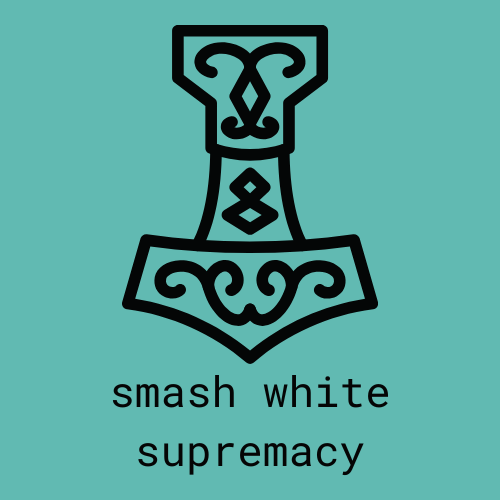The Problem: The United States of Death is dying.
When you think about the legislative wars, and overall lack of infrastructure, or community-based initiatives, the death of United States almost seems inevitable. The not-so great white, patriarchal, colonial experiment — based upon capitalistic Christofascism, genocide, and enslavement — is in collapse.
As it should be.
The U.S. has been roiling in environmental, political, emotional, medical, and social crises for decades. Centuries.
In the U.S., death by state violence occurs with breathtaking and terrifying frequency, and is reaching critical mass. Stories of antisemitic, anti-Black, and anti-Asian rhetoric and direct violence are inescapable in the media. Death is everyday life in United States of America.
I won’t watch the video of Tyre Nicols’ brutal murder – despite CNN and other major media outlets’ ongoing viewing party. It’s nauseating to me that corporate news media promotes snuff for ratings.
I’m sure many of my fellow Americans may be more desensitized to this culture of murder than I am. After Uvalde police left children – in a primarily immigrant area – kettled inside a school building, essentially helping a gunman murder them, I can’t remain unaffected by violence. Perhaps its my own naivete that has me writing about this at all.
The Solution: Acknowledge Reality
As individuals living in the U.S., we must stop placing faith in the state. We must accept that the State isn’t working in our collective, or individual, best interest.
It doesn’t escape me that saying as much reads as taboo: being “American” means accepting the conditioned belief that America is always right – no matter what.
Let’s sit with that lie which white colonizers brought to this continent. Reflect upon the possibility that it’s an illusion leading us to destruction.
Personally, I use the works of two women – Drs. Marsha Linehan and Rita Segato – as a guide for living through the death of the U.S., while also examining actionable ways to create its replacement.
This is the first of an ongoing series.
How To Use Radical Acceptance
U.S. Psychologist Dr. Marsha Linehan’s concept of Radical Acceptance (1993) is defined as, the acceptance of one’s tangible reality for what it is, not what one wishes it to be. Outside of Dialectical Behavioral Therapy construct, Radical Acceptance helps us to see our social realities in place of projected patriotic idealism.
I see the U.S. as it is – increasingly harmful, violent, and oppressive to peoples who don’t match its founding white Christian archetype. I don’t like it, but I see and accept the reality.
How A Manifesto in Four Themes is Used
Patriarchy is at the center of Argentine-Brazilian anthropologist Dr. Rita Segato’s A Manifesto in Four Themes (2016). The state defines who a man is, by posing the question of gender and simultaneously providing its answer. According to Dr. Segato:
“the question of gender–the patriarchal order–is the cornerstone and center of gravity for all forms of power.”
The “church” (or a nation’s prominent religious order) has been historically invested in upholding Conservative law due to land ownership. In the United States, that investment is rooted in ongoing global colonialism – which has always been the goal of all patriarchal societies.
Accepting Historical Fact: The United States was built on Death
Thomas Jefferson – enslaver, child rapist, and third President of the United States – wrote into the Declaration of Independence:
“We hold these truths to be sacred & undeniable; that all men are created equal & independent, that from that equal creation they derive rights inherent & inalienable, among which are the preservation of life, & liberty, & the pursuit of happiness”–the American Declaration of Independence, 1776.
The promise of the American Dream has always been exclusive
“The American Dream” is a breathtaking lie. In reality, free labor and enforced servitude, marred with death and violence, built the United States. We must recognize the hypocrisy of the American Dream, and all the lies which sprang forth from it.
The promise of America has never truly existed for anyone who isn’t white. It’s only sparingly available to those outside the narrowly-defined binary of Masculine and Other.
Both parties are in on it.
This exclusion propels the continual loop of patriarchal authority, reinforcing its existence within and because of, all other systems. While political parties may appear to have opposing values, none has attempted, or demonstrates an interest in, shifting us out from the patriarchal narrative. They are complicit in reinforcing it. And in the United States, upholding this norm has always resulted in death for othered populations.
Accepting the United States as it is
Money and power do not trickle down
The illusion of power being a trickle-down hierarchal force is responsible for the Suffragette movement, Reaganomics, and white feminist poison. “Trickle-down” itself is firmly centered in both whiteness and capitalism, and is a resoundingly unsuccessful pursuit.
In Manifesto, Dr. Segato notes in that collective attempts to seize patriarchal power by force or democracy have both proven useless. Manifesto also mentions the Brazilian government’s attempts to legislate away gender education in schools as recently as 2016.
An outdated representation of ideals
As U.S. citizens currently face one hysterical human rights restriction after another, what hope can we place in upcoming elections?
United States public servants, some of whom are paid to reinforce the Third Reich, have historically maintained a “whites only” perspective on power. If we have any hope of changing the U.S., we must immediately discard the ineffective notion that voting for, and relying on octogenarians – who promote top-down, white-to-Black, cis-only leadership dynamics – will lead us anywhere collectively.
Reimagine the U.S. as it could be
We must embrace the possibility of an equality-centered government, and accept the necessary individual and community responsibility required to attain it. Any hopelessness we have is the result of misplaced faith within the state. We have to accept that alternative options do exist. The key to any collective and intentional movement forward rests in our rejection that this version of the United States is the only way it can ever be.
“We should instead look toward concrete experiences of those peoples who are still today communally and collectively organized,” advises Dr. Segato from 2016.
State agencies extend white patriarchy
When we accept that the state is not the answer, we can also discard para-state entities which rely heavily on (and benefit from) the white patriarchal power structure and its financial dominance. When we stop expecting the state to change patterns which benefit its existence we’re able to accept and actualize our own power in reshaping ideas of what government should be.
Examples of para-state agencies in the U.S. may include:
- local, state, and federally-accessible insurance, medicine, and other healthcare aid
- universities, medical facilities, state licensing boards, and nonprofits
- national, state, or local accreditation and ethical boards/bodies regarding education and healthcare
To combat para-state propagation of white patriarchy, we must heed the call of Indigenous and Black writers and scholars. We must follow the lead of the “othered” peoples in communities which have thrived despite white, global, colonial, attempts at genocide.
Creating Community
Individuals must be realistic and structured in our efforts at creating community. Dr. Segato names two guidelines for fostering and building community:
- a “symbolic density,” belief system, or agreed-upon shared value system is key. Community needs an ongoing, self-perpetuation, cohesive baseline structure; as opposed to a goal-oriented one for a limited time only.
- a common history and agreed-upon common goals are key. We have to accept the American lie for what it always was–a set of ideals made only for white men. What ideals and goals can be viewed as ideal for yourself? Do you know anyone else who has this vision?
Using White Privilege for the Tool It Is:
Reconstruct Community With the Existing Fragments:
The time to embrace your racial and social identity – and use it effectively – is now. “White guilt” has never been more worth examining.
It’s too easy to become embroiled in heightened discourse that gets our adrenaline running, and leaves us feeling like we’re about to have a stroke. The familiar online exercise in frustration as we to try knocking at strangers’ doors to make point.
But is “clapping back” at strangers on Twitter really the best use of our positions and voices?
Instead, I recommend an empowered reframing of guilt for white Americans:
- Do you really feel guilt after learning more truth about American history? Or did someone tell you that’s how you feel?
- What’s wrong with feeling guilt, anyway?
- How do you personally manage your own emotions?
It’s imperative to understand yourself as an individual and as someone who lives in the U.S. We’re individuals – even when it’s easier to gag, than proudly say, “I’m a U.S. citizen.” We must own what we are. Engaging in critique of our country is a hallmark of the lie which stole this land, and while it still stands, I claim it as my own right. So should you.
Solidarity
Another accepted lie is that standing up to Nazis, Proud Boys, Patriot Front, and the KKK will lead to some sort of terrible fate FOR you. It’s true that individuals within these groups can be murderous. But at this point there’s more danger from my local police force than my local Proud Boys chapter, statistically speaking.
It’s your Constitutional Right as a citizen to take personal safety measures and choose who, how, and when to use your privileges to speak out against these hate groups. While hate groups are known to provoke violence against specific targets, that doesn’t mean we should pretend those groups aren’t a very real risk to everyone; and that speaking out against them shouldn’t happen.
Wishing away racist mobs doesn’t work. Ignoring them, in hopes they’ll pipe down and go away, is exactly what brought us to where we are now. It’s false to assume the only response against racist ideology and religious extremism is physical violence.
Use Your Whiteness
There are a myriad of ways which us white people in particular should use our whiteness. First we must accept our own inherent racism and commit to being anti-racist.
Religious discrimination, xenophobia, transphobia, racism, ableism have to be left out of any real discourse and forward movement. We must be in solidarity against all colonial powers, and reject them for the patriarchal failures they are.
This means embracing and listening to Indigenous #landback advocates, and trans peoples.
Broadening Our Possibilities
A politics in a feminine key, posits Dr. Segato, is a broadening of our understanding and our own possibilities.
A feminine key, as envisioned by Dr. Segato, is a relaxation of the hierarchal structures and norms itself. A good example of this could be seen as simple as the decorum of public speaking at Statehouses: itself an arduous process fraught with nepotism and religious and white privileges.
Intentional, conscious movement for a collective, communal, less formal way of meeting one another realistically is encouraged.
I suggest a shift from defeatist narratives. It’s my own thought that the surging rise of American and global fascism is a kneejerk response to transcendent technological and educational expansion. Over the last 20 years, youth especially have more access to the world than before. Perhaps the fear of losing this draconian social power structure prompted the escalating hate rhetoric and activity.
But what if those of us who with more social and racial liberties, and the financial ability to create and maintain platforms, capitalized on the educational and technological strides we’ve made, and actively communicate against inequity–rather than fearfully hiding?
The example of passive state violence in ignoring, rather than reinforcing, safeguards and infrastructure during the COVID-19 pandemic, could be seen as an example of the ableist patriarchal order.
One remedy to this would be enabling online access to all forms of social services whether it be medical appointments, public speaking engagements, or testimony at public hearings.
Abolition
America must reject the capitalistic control of its carceral system – from local police to national military, and both prison and foster-care systems. The continuous introduction of legislative restrictions on individual American rights make it impossible for individuals working in systems which intersect criminal justice to change these systems from within.
It’s unacceptable that anyone can be criminalized, institutionalized, or die at the hands of police, let alone have their lives and livelihoods ruined. It must be acknowledged that the criminal justice and prison systems in the United States specifically target non-citizens, Black Americans, and Indigenous peoples.
Prison and police abolition would also make the abolition of the country’s failing mental health system possible. After the risk of imprisonment is eradicated for the most targeted populations, only then will mental health and wellness – for the individual and the collective-can be addressed. Mental health professionals who are abolitionists have to recognize the current and historic racist systems of oppression as they exist today; and their roles and benefits within them.
Meet You Where You’re At:
The United States is dying. We’ve accepted that. But where are you?
Flexible ways to meet yourself where you’re at:
- ongoing, regular financial donations to local, grassroots, Black and Indigenous owned and led social justice orgs
- connecting with the neighbors around you if you feel safe doing so; checking in on older and/or disabled folks, especially during seasonal changes
- network safely online with like-minded peoples locally and/or globally
- commit to learning about your own inner colonial mentality
- stop telling Black people and Indigenous people how to think, feel, behave
- stop sharing videos of graphic violence
- commit to trusting yourself and pick up a resource below that feels right
- consider your strengths and find ways to volunteer if possible, either in your community or online
- do educate yourself on reparations and #landback
- do consider using financial resources to fund grassroots orgs which do not rely on government funds at all
- commit to better understanding how global colonialism, capitalism, and white supremacy have made this all possible; follow experts and scholars worldwide who have lived experience with racism.
- use your creativity and things you already enjoy to help out in your home, communities
- what types of media do you consume about people who don’t have the same racial and/or religious background as you do?
- If you are a white parent, how do you demonstrate to your kids that white supremacy exists? How are you teaching them the factual family history of your place in U.S. history? Do they understand what religious bigotry sounds like and looks like?
- What would that even look like?
- Use your curiosity to unpack your private thoughts and reach new conclusions. Confront any of your own doubts and questions directly as they relate to trans and queer people, Black people, enslavement, religious upbringing and discrimination, Indigenous rights, or reproductive rights.
- You don’t need to make everything public – even in the oversharing culture of the 21st century. The journey to unpacking one’s own privileges on various patriarchal axes is not comfortable, and it need not be public or immediate.
Resources:
Dr. Rita Segato, A Manifesto in Four Themes
The 1619 Project, Nikole Hannah-Jones
bell hooks, Teaching Community: a Pedagogy of Hope
Dr. Linehan speaks on her own transformation via Radical Acceptance (with subtitles)
Rafia Zakaria, Against White Feminism: Notes on Disruption
Regina Jackson, Saira Rao, White Women: Everything You Already Know About Your Own Racism and How to Do Better
Audre Lorde, The Master’s Tools Will Never Dismantle the Master’s House
Kimberle Crenshaw, on Intersectional Feminism




